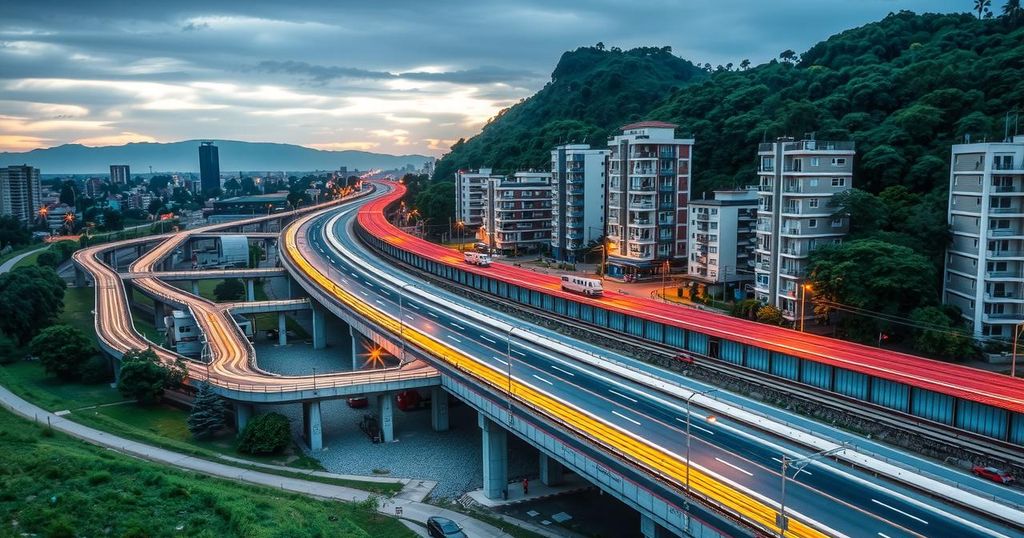Peru Seeks Increased Investment in Infrastructure to Address Growing Demand

Peru is facing an increasing demand for enhanced infrastructure, driven by a significant investment deficit estimated at US$100 billion to US$150 billion. Economy Minister José Arista reported a record investment execution nearing US$58 billion in 2024, calling for public-private partnerships to address growing infrastructure needs, particularly at the ports and airports. To achieve GDP growth rates of 5% or higher, aggressive investment in infrastructure is essential.
Peru is experiencing a marked increase in the demand for robust infrastructure, encompassing critical areas such as ports, roads, railways, and airports. Economy and Finance Minister José Arista highlighted that 2024 is poised to be a flourishing year for the nation’s economy, reporting a record investment execution nearing S/58 billion (approximately US$15.48 billion). This amount reflects a 16% increase over 2023’s figures, which were also commendable.
Minister Arista pointed out that Peru is faced with a considerable infrastructure deficit, estimated between US$100 billion and US$150 billion, a gap that continues to widen. He stressed the necessity for increased investments to adequately support infrastructure development, particularly in light of the demands posed by the ports in Callao and Chancay, as well as the New Jorge Chávez International Airport. “We cannot intend to be Latin America’s port hub with the same logistics infrastructure that we have now,” Arista remarked, emphasizing the need for enhanced logistical capabilities.
The Minister acknowledged that while public resources are currently being allocated, they are insufficient to meet the rising demands. He advocated for public-private partnerships, particularly concerning investments in the Matarani, Chimbote, and Etén Ports, and called for wider roads and the establishment of commuter trains to improve connectivity between Chancay and Callao. “Indeed, our demand for more infrastructure is intensifying,” he stated, highlighting that current investments fall short of what is necessary for sustainable growth.
If Peru aspires to achieve annual GDP growth rates of 5% to 7%, it must prioritize infrastructural investment, particularly to capitalize on the country’s advantageous geographic location. This proactive approach will be crucial in driving the nation towards a more prosperous economic future.
The need for enhanced infrastructure in Peru has been a growing concern, especially as the country seeks to bolster its economic performance and connect more effectively with global markets. Minister José Arista’s declarations highlight the critical gap in infrastructure investment and the urgency for collaboration with the private sector to address these needs. The burgeoning operational demands of Peru’s ports and airports necessitate increased investment not only from the government but also through engaging private resources to meet these aspirations.
In summary, Peru’s infrastructure needs are substantial, with a significant investment deficit identified by Minister José Arista. Increased capital is essential for the country to develop the necessary logistical capabilities for its ports and airports, ensuring sustainable economic growth. The engagement of private investors through public-private partnerships is vital to address these challenges effectively. This approach will play a key role in enabling Peru to realize its economic potential and enhance its position as a regional hub.
Original Source: andina.pe








